How to Facilitate More Sustainable Design Workshops
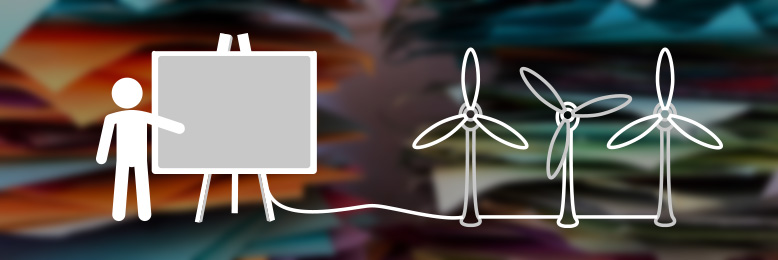
Human-centered design workshops and discovery exercises offer fast, effective ways to solve problems in group settings. Unfortunately, they can also produce a lot of waste. In this post, we’ll explore how to run more sustainable design workshops.
Collaboration is the cornerstone of our process at Mightybytes. Early in an engagement, we often facilitate a discovery workshop—or series of workshops if the project calls for that—to creatively address specific problems or challenges faced by our clients. During these workshops, we run various collaborative exercises which take many forms: sometimes we map an organization’s content ecosystem. Other times, this collaboration drives a user-centric approach to solving specific design issues, roadmapping products, a creating an organization’s long-term digital strategy. The process is creative, insightful, incredibly effective, and yes, messy.
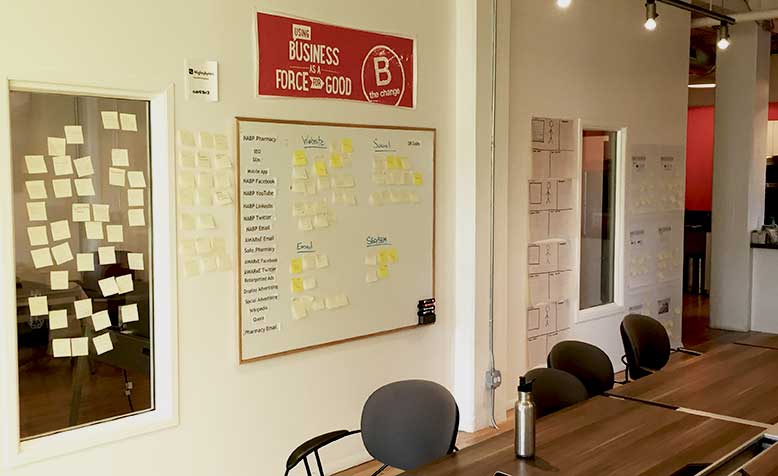
Collaboration-driven design workshops help us get to the heart of a solution quickly, but they also tend to produce a great deal of waste as well. After running one of these workshops, the office is typically strewn with sketches, sticky notes, paper scraps, design mockups, and so on, all of which are very useful for moving a project forward but may ultimately end up being thrown away. Not optimal. So how do we maintain the high value of these workshops while also keeping their environmental impact low? Here are some ideas for running more sustainable design workshops.
Improve Physical Workshop Materials
First, focus on whether or not you can reduce the impact of physical materials used in a workshop, such as pens, paper, crayons, tape, and so on. Are there occasions when you can use a less wasteful product? What will the ramifications of that choice be? Our latest book, Designing for Sustainability notes:
Some teams like the tactile flexibility of using sticky notes and whiteboards while others prefer an online sorting tool like Trello…If you’re going analog, consider recyclability of your materials.
Sticky Notes
While many sticky notes are made of recycled materials, the adhesive backing can cause them to be rejected by some recycling programs. If you use a lot of stickies, make sure to go with a recycling program that supports mixed paper.
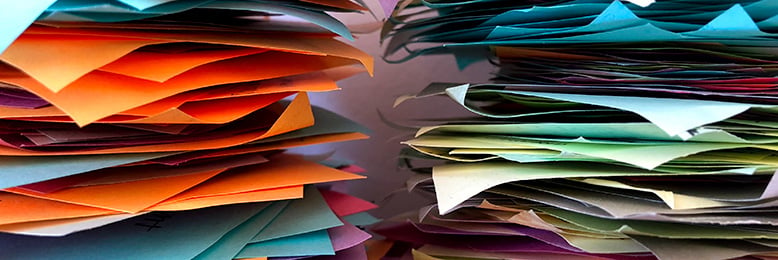
Also, many companies offer versions of their products made from recycled materials, but be sure to read the labels and beware of greenwashing, where companies make environmentally-friendly claims without actually walking the walk. If possible, look for products that include a higher percentage of post-consumer recycled materials, which require less energy, water, and chemicals to manufacture.
Our B Corp friends at Dolphin Blue offer an entire line of recycled and environmentally friendly office supplies as do the folks at Give Something Back (also a B Corp).
Whiteboard Markers
It’s a common scenario: at some point during a workshop at least one whiteboard marker fails, dries out, etc. In America alone, about 400 million whiteboard markers are thrown away annually. That’s a lot of dead pens! AusPen, an Australian company with offices in New York, makes refillable markers that use non-toxic inks as a more environmentally-friendly alternative. Here’s a fun video about them:
Digital Workshop Materials
For most physical workshop exercises, there is typically some sort of digital equivalent. Need to run an online brainstorming session? Dozens of downloadable and shareable templates can help you. Facilitating a virtual Lean UX workshop? There’s an app for that. Creating dozens of user stories with a remote development team? SaaS platforms like Trello, Jira, and others can help you manage the process. Pretty much anything you can do in a physical, face-to-face workshop can also be done with some set of online tools.
These tools can help you cut down on using the physical materials described above, but digital collaboration tools are not in and of themselves a zero impact solution. Pixels require electricity. Electricity is needed on the front-end as well as for hosting, data transfer, and so on. In many countries, that electricity is often sourced from polluting fossil fuel-based processes like fracking, burning coal, etc. So even though you may be reducing paper waste by using an online collaboration tool, you are still creating waste. Again, from Designing for Sustainability:
If you’re using digital tools, they of course require electricity to run and Trello, as an example, is hosted by Amazon Web Services (AWS), which doesn’t get high marks for renewable energy use.
While AWS has made strides forward in committing to renewable energy since that was written, they still have a long way to go to catch up to tech leaders like Google, Facebook, or Apple. Where you host your content matters.
At Mightybytes, we offset all our electricity use annually, so our virtual workshops are, at least on the front end, carbon neutral. A company like our fellow B Corp Three Degrees can help you facilitate this.
Digital Whiteboards
Depending on the nature of your workshop, you might consider a hardware-based digital whiteboard. These are obviously good for remote collaboration and can speed up the process of collecting information. Google’s Jamboard, for example, is fully integrated with the G Suite line of products, meaning you can easily add files from Google Docs, Slides, Sheets, or photos stored in Drive. Plus, the passive stylus and eraser don’t require batteries. The $5k hardware price tag, however, could put Jamboard out of reach for some.
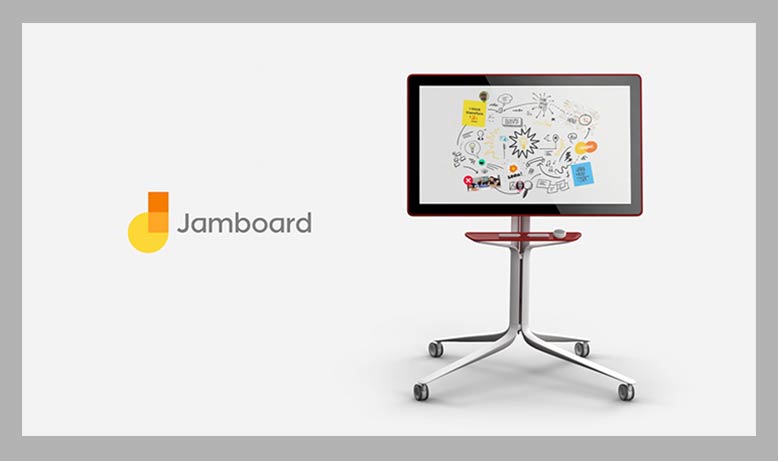
Also, digital whiteboards are not for every team. One of our UX Designers noted that her previous employer, an educational publisher, often struggled with the digital whiteboard solution they implemented due to usability issues. When bad software gets in the way of team productivity, everyone loses.
Whiteboard Software
Miro and Mural are software-only whiteboard collaboration solutions that include features for UX research and design, product roadmapping, brainstorming, and so on. Like Jamboard, they also integrate with many popular applications, including Slack, Jira, Trello, Google Drive, InVision, Sketch, PowerPoint, and others.
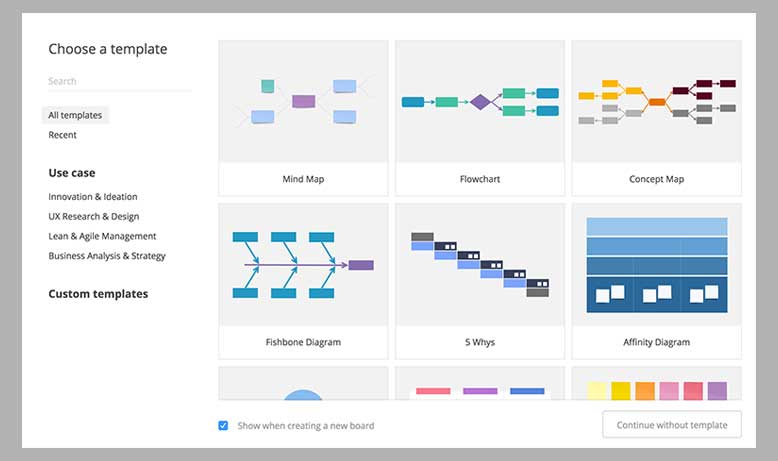
These software-only whiteboard-style collaboration tools offer free trials so you can try them out before deciding whether or not the features they offer will fit your specific needs.
Be Inclusive
Finally, while this isn’t directly related to managing workshop waste, when devising sustainable strategies it is important to give people equal consideration alongside planet. Sustainable design workshops should also be as inclusive as possible. Will you have people with certain disabilities in your workshop? How about people from other cultures? Take these things into consideration ahead of time and plan accordingly.
At a recent B Corp Champions Retreat, a set of ground rules were posted in every room and in the overall program. These set expectations for both facilitators and session attendees:
- Lead with empathy
- Get comfortable with discomfort
- Value diverse perspectives
- Stay judgement free
- Maintain confidentiality
- Advocate for the emotional well-being of participants (and all stakeholders)
- Move up to be heard, then step back to let others be heard
- Practice radical inclusion
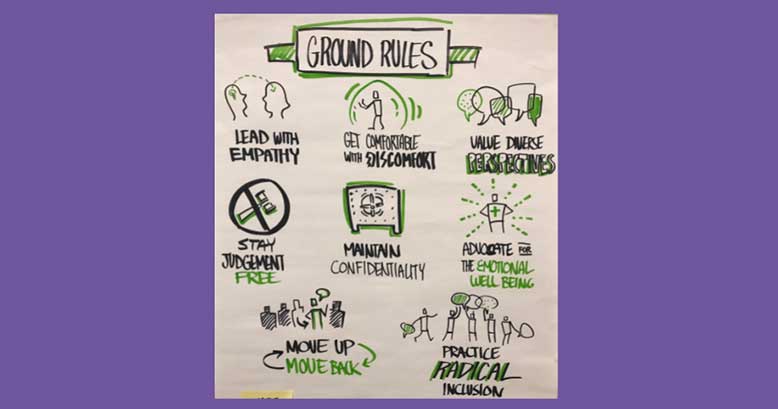
Adding a simple slide like the above can help ensure that everyone attending feels comfortable and in a safe space.
Facilitating More Sustainable Design Workshops
In some design workshop situations, it is important to use physical artifacts like paper prototypes and hand-drawn wireframe sketches. They are critical to achieving consensus quickly, which leads to higher chances for project success. For others, especially in remote collaboration settings, a digital solution might be the better option. Whichever you choose, keeping tabs on the waste produced by each process is part of a bigger picture sustainability strategy and a key component to running more sustainable design workshops. As a B Corp, measuring what matters is how we roll.
If you’re looking for additional ways to make meetings and workshops more eco-friendly, check out this post from our friends at fellow B Corp Vianova: Simple Ways to Make Your Offsite Meetings and Retreats Eco-friendly.
Digital Carbon Ratings, now in Ecograder.
Understand how your website stacks up against industry carbon averages with this new feature.
Try Ecograder


